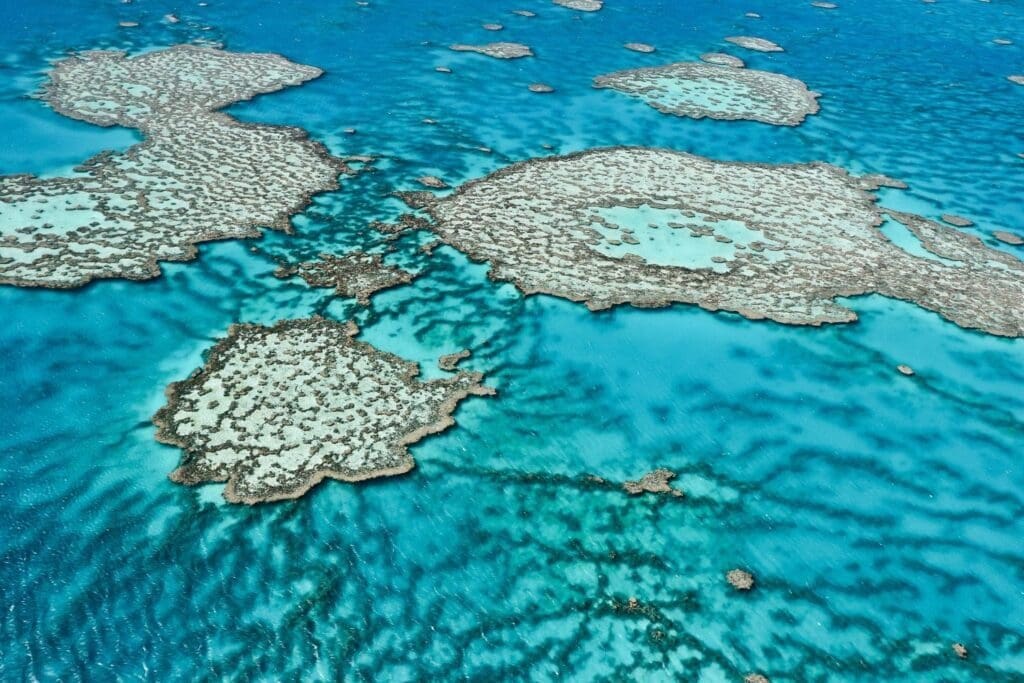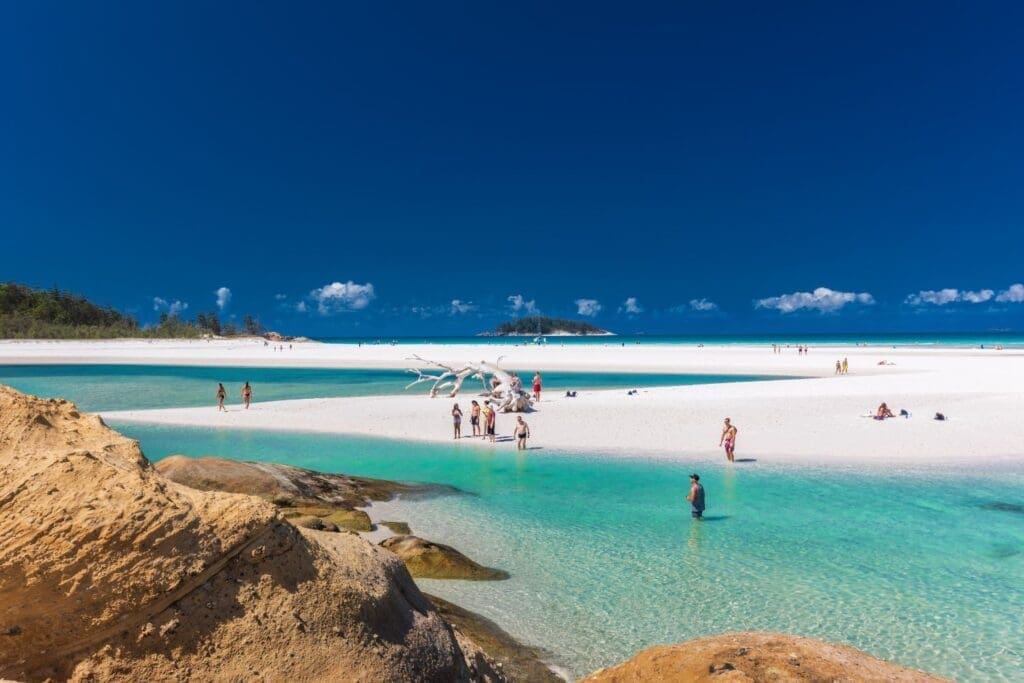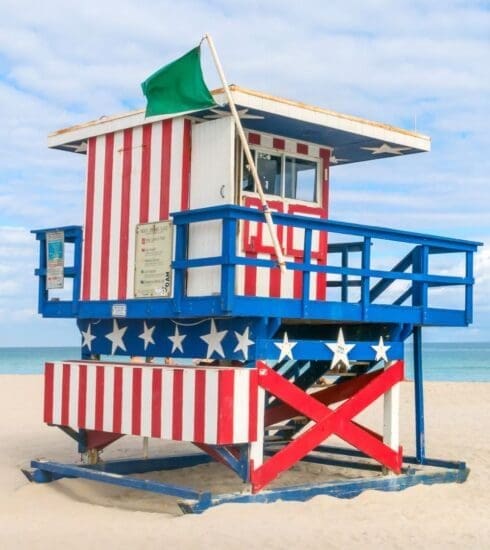Exploring Australia’s Cities and Nature: The Great Barrier Reef
The Great Barrier Reef, the world’s largest coral reef system, is one of Australia’s most treasured natural wonders and a UNESCO World Heritage site. Stretching over 2,300 kilometers off the coast of Queensland, it’s composed of thousands of reefs and islands and home to an extraordinary variety of marine life. Whether you’re an avid diver, snorkeler, or simply someone who appreciates nature’s beauty, visiting the Great Barrier Reef offers an unforgettable experience. Here’s your guide to exploring this breathtaking underwater paradise.

Where to Start: The Best Access Points to the Great Barrier Reef
The Great Barrier Reef is accessible from several coastal cities in Queensland, each offering unique experiences and attractions:
- Cairns: One of the most popular gateways to the reef, Cairns offers a wide range of day tours, snorkeling, and diving trips. It’s ideal for travelers looking for vibrant city life alongside reef adventures.
- Port Douglas: Located about an hour north of Cairns, Port Douglas is a quieter, more laid-back alternative, perfect for luxury travelers and nature lovers.
- Airlie Beach and the Whitsundays: If you’re dreaming of white sandy beaches and crystal-clear waters, Airlie Beach and the nearby Whitsunday Islands are perfect for combining reef exploration with relaxation.
Snorkeling and Diving: Getting Up Close with the Reef
The Great Barrier Reef is a dream destination for snorkeling and diving enthusiasts. With its clear, warm waters and an abundance of marine life, it offers some of the best underwater experiences in the world.
Snorkeling is a great way to explore the shallow sections of the reef, even if you’re a beginner. Many tours cater to snorkelers, offering guided trips where you can swim alongside colorful corals, tropical fish, and perhaps even a sea turtle or two. The Low Isles and Green Island are popular snorkeling spots near Port Douglas and Cairns, offering easy access to vibrant coral gardens and calm waters.
For certified divers, the Great Barrier Reef offers deeper and more immersive experiences. Dive sites like the Ribbon Reefs and the Cod Hole are famous for their biodiversity and dramatic coral formations. You’ll have the chance to encounter larger marine species like reef sharks, rays, and schools of barracuda. Many dive operators also offer introductory dives for those who aren’t certified but want to experience scuba diving for the first time.

Marine Life: A Kaleidoscope of Colors
One of the most incredible aspects of the Great Barrier Reef is the diversity of marine life that calls it home. The reef supports:
- Over 1,500 species of fish, including colorful parrotfish, clownfish, and angelfish
- Sea turtles, including the green sea turtle and hawksbill turtle, which often glide gracefully through the water
- Dolphins and whales, with humpback whales migrating through the reef during the winter months
- Reef sharks and manta rays, adding an element of excitement to diving trips
- Coral species of every shape and color, from brain coral to staghorn coral, which create the vibrant, living foundation of the reef
Whether you’re diving or snorkeling, the sight of these creatures in their natural habitat is nothing short of awe-inspiring.
Island Hopping: Discover the Whitsundays and More
The Great Barrier Reef isn’t just about underwater adventures; it’s also home to hundreds of beautiful islands, each offering its own slice of paradise.
The Whitsunday Islands are among the most famous, offering a stunning mix of pristine beaches, crystal-clear waters, and lush rainforests. Whitehaven Beach on Whitsunday Island is consistently ranked as one of the most beautiful beaches in the world, with its pure silica sand and turquoise waters.
Hamilton Island is another popular choice, offering luxury resorts, wildlife experiences, and easy access to both the reef and the nearby islands. For a more secluded experience, consider Heron Island, where you can stay right on the reef and snorkel just steps from your accommodation.

Reef Preservation: Protecting a Fragile Ecosystem
As one of the world’s most fragile ecosystems, the Great Barrier Reef is under threat from climate change, coral bleaching, and human activity. As a visitor, it’s important to choose eco-friendly tours and follow guidelines to help protect the reef for future generations.
- Don’t touch or disturb the coral: Coral is a living organism, and even minor contact can cause damage. Always be mindful of where you swim, snorkel, or dive.
- Use reef-safe sunscreen: Many traditional sunscreens contain chemicals that can harm coral. Opt for reef-safe sunscreen that doesn’t contain oxybenzone or octinoxate.
- Support conservation efforts: Some tours and organizations contribute directly to reef conservation efforts. Look for operators with eco-certifications and sustainable practices.
By taking these steps, you can enjoy the beauty of the reef while ensuring its preservation for years to come.
Unique Reef Experiences: Submarines, Helicopters, and Glass-Bottom Boats
If you want to experience the reef without getting wet, there are plenty of alternative ways to explore its wonders. For a unique perspective, take a helicopter tour over the reef. The aerial views provide a stunning perspective of the sprawling coral formations, the vivid blues of the water, and the intricate patterns that can only be fully appreciated from above. The famous Heart Reef, a naturally occurring heart-shaped coral formation, is best seen from the air.
For those who prefer to stay close to the water, glass-bottom boat tours and semi-submersible vessels offer fantastic views of the reef without the need to snorkel or dive. These tours allow you to observe marine life and coral formations through large viewing windows, making them a great option for families or those who prefer to stay dry.
Indigenous Culture: Learning from the Traditional Owners
The Great Barrier Reef is not only a natural wonder but also holds deep cultural significance for the Aboriginal and Torres Strait Islander peoples, who have lived in harmony with this environment for thousands of years. Many reef tours now offer opportunities to learn about the Indigenous connection to the land and sea, providing cultural insights alongside your exploration of the reef’s natural beauty.
Tours led by Indigenous guides often incorporate Dreamtime stories, bush tucker knowledge, and insights into how the traditional custodians of the land have preserved and respected these ecosystems for generations.








